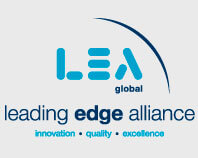As was publicized earlier this month, the FASB officially approved the deferral of the new lease accounting standard (ASC 842) for private companies for another year. The new effective date is for fiscal years beginning after December 15, 2020, or 2021 for calendar year companies.
While timing has been extended, companies must begin planning and should take advantage of slower periods in their business cycles over the next year. Companies have reported that adoption takes more time than expected, and those that wait until too close to the deadline could experience limited and expensive external resources. LeaseQuery, a lease accounting software solution built specifically for ASC 842, recently published a study on this matter that reports:
- Nearly 70% of private companies have not prepared for the updated process or have reported little progress in adopting it (i.e., only have assembled project team and/or created a budget).
- For companies with more than 15 leases, only 33% intend to attempt to address lease accounting through Excel spreadsheets. That number significantly decreases as companies get beyond 30 leases.
- Inventorying leases and pertinent data is the most time-consuming aspect of the project for companies.
Relying on existing lease management software can be problematic, as most relevant inputs for the new standard have not been accurately maintained, tracked and populated. Elements of operating leases that used to have no impact on accounting since the accounting was off-balance sheet now directly impact material assets and liabilities.
Renewal terms are also tricky, and must be digested, assessed and documented under the new standard on a case-by-case basis. Under the new standard, renewal terms can significantly increase the liability to be recorded.
In addition, selecting a discount rate requires careful consideration. Under the new standard, the discount rate should match what the company could obtain for secured borrowings over a term similar to the lease term. If a company is actively entering leases over the course of a year, this discount rate can fluctuate and therefore must be documented at the inception of each lease each time.
Practical expedients – despite whether companies see these elections as practical or expedient, they must be carefully selected, documented and applied. The key expedient package involves not reassessing expired or existing contracts, original lease classification or the treatment of original direct costs. There is, however, debate about whether the expedients allow a company to simply ignore historical accounting treatment that was wrong. We would suggest you have an up-front dialogue with your audit firm early in the discussions about this issue.
Since almost all borrowings and obligations will be considered “on-balance sheet,” the new standard is expected to standardize a company’s use of leverage and its different forms. We recommend creating a strategy to formalize responsibilities and ensure accountability, identify the right time to dive in, budget the project funds, secure a technology solution and arrange external resources. Final step: pull the trigger and get moving.
Learn More
For more information, please contact Michael Dukes or Lindsey Sykes at 770.396.2200.





